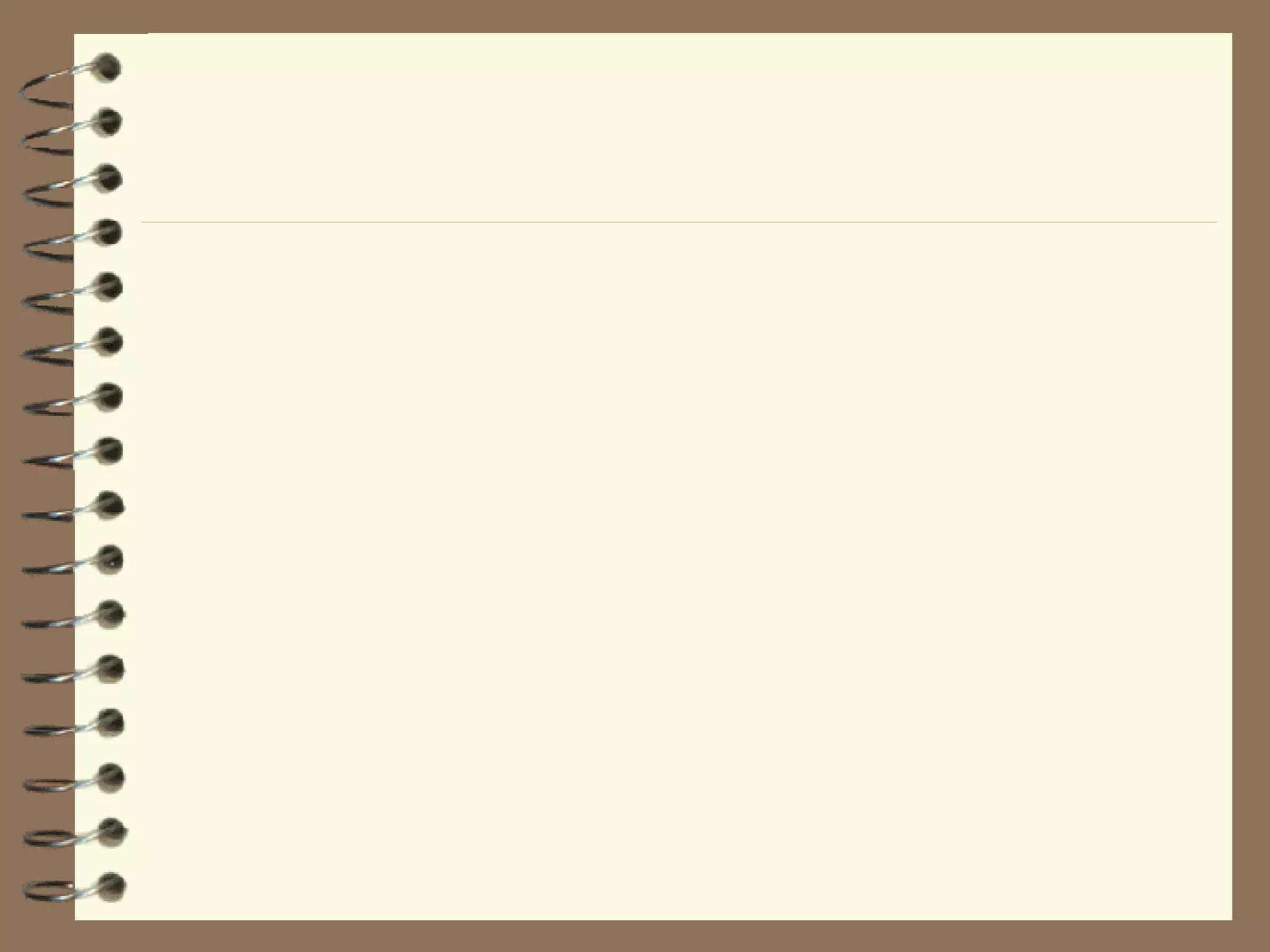The document discusses file handling in C++. It explains that files are used to store data permanently on storage devices like hard disks, while variables are stored temporarily in memory. It then describes C++ streams and classes used for file input and output like ifstream, ofstream, and fstream. It also covers opening, closing, reading from and writing to files, as well as checking file pointers and seeking to different positions in a file.
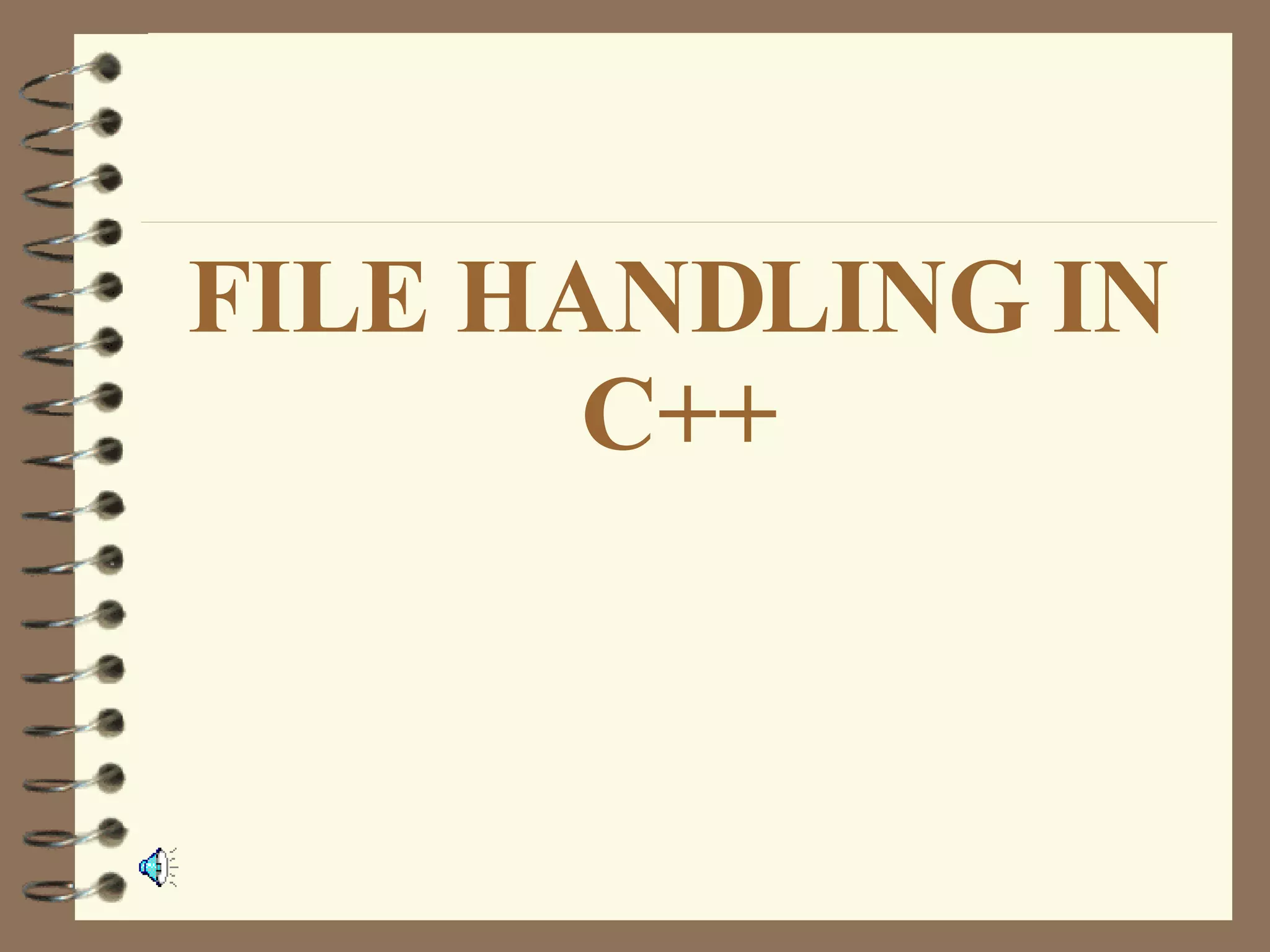


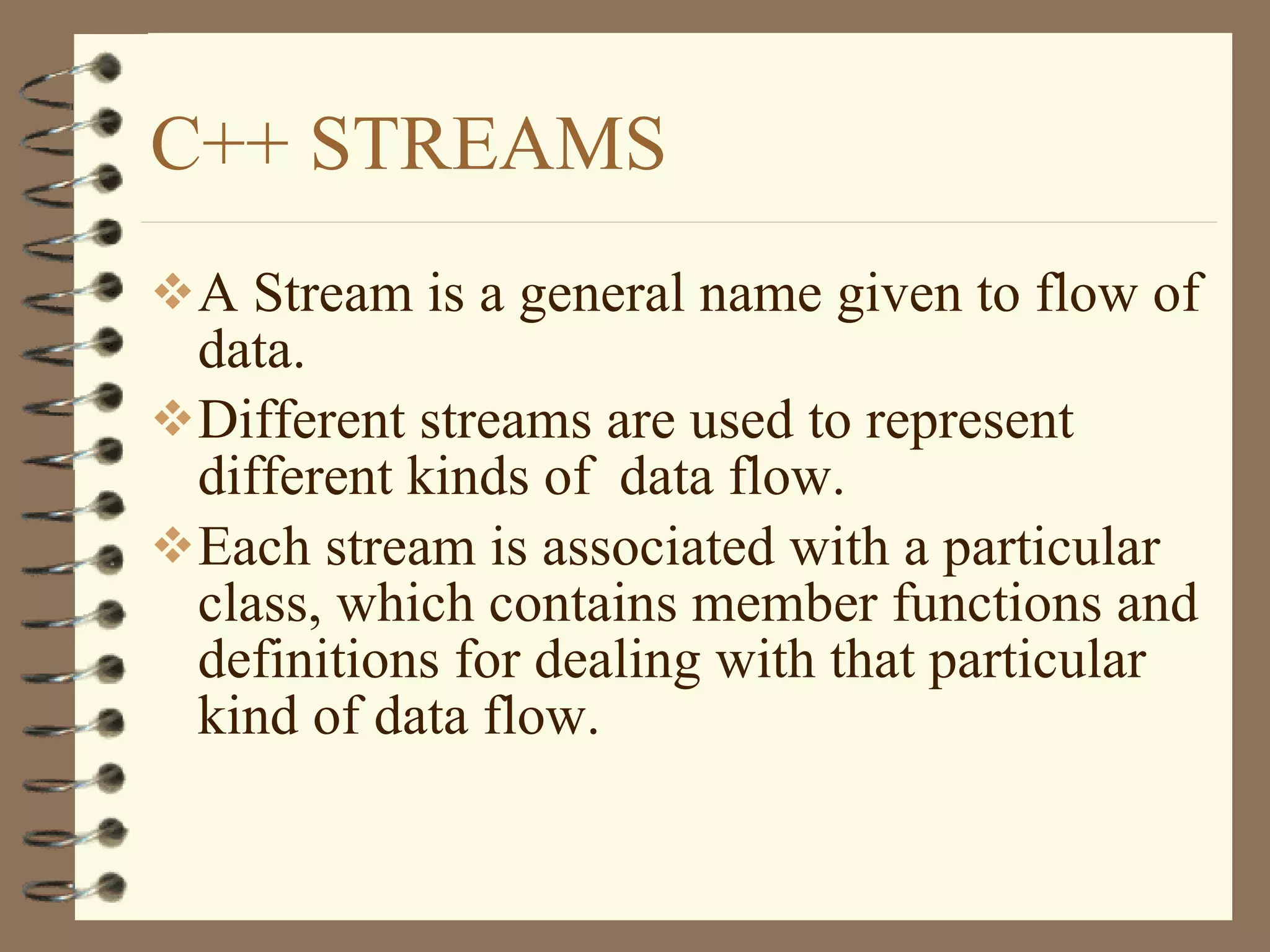
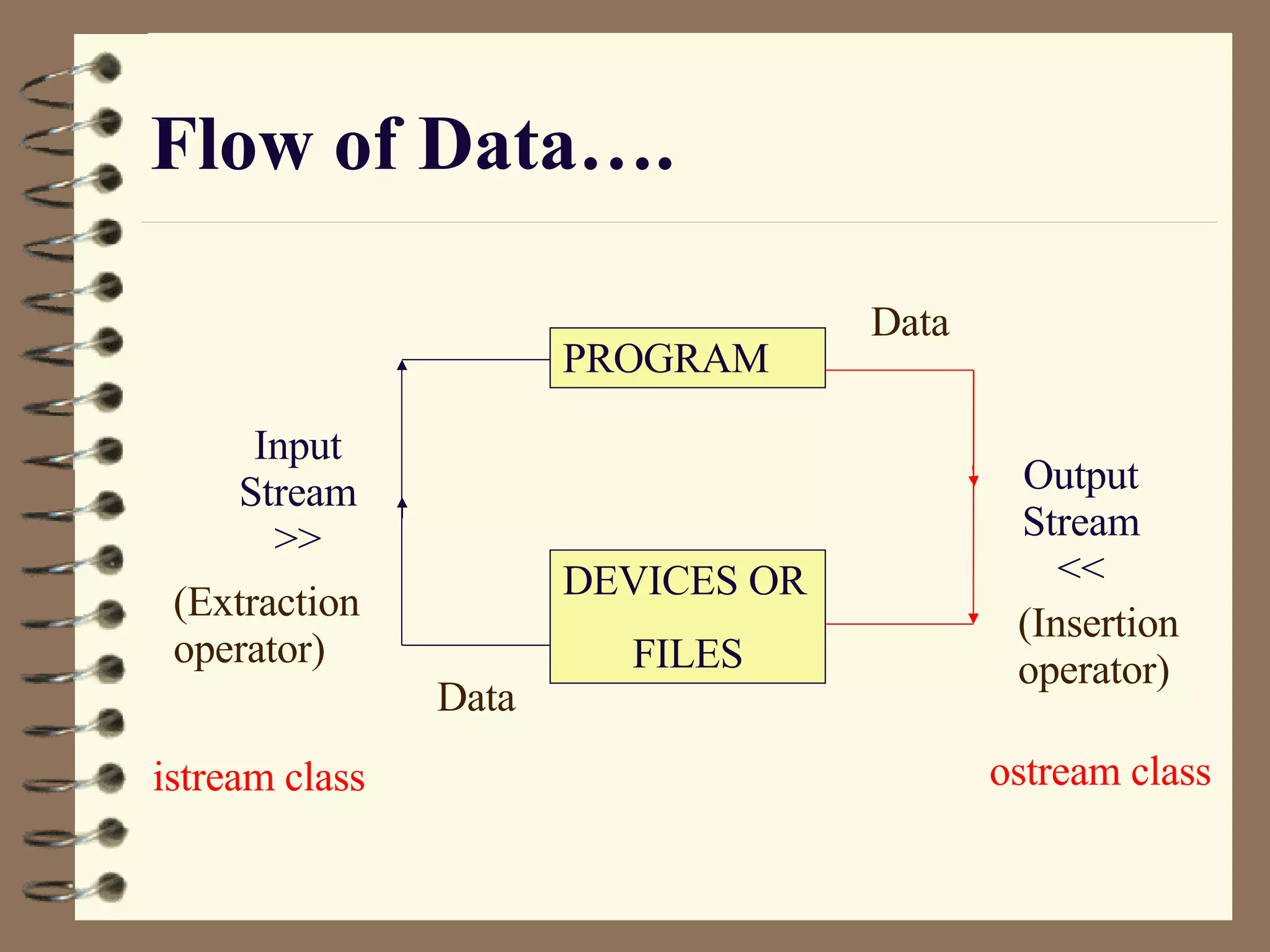
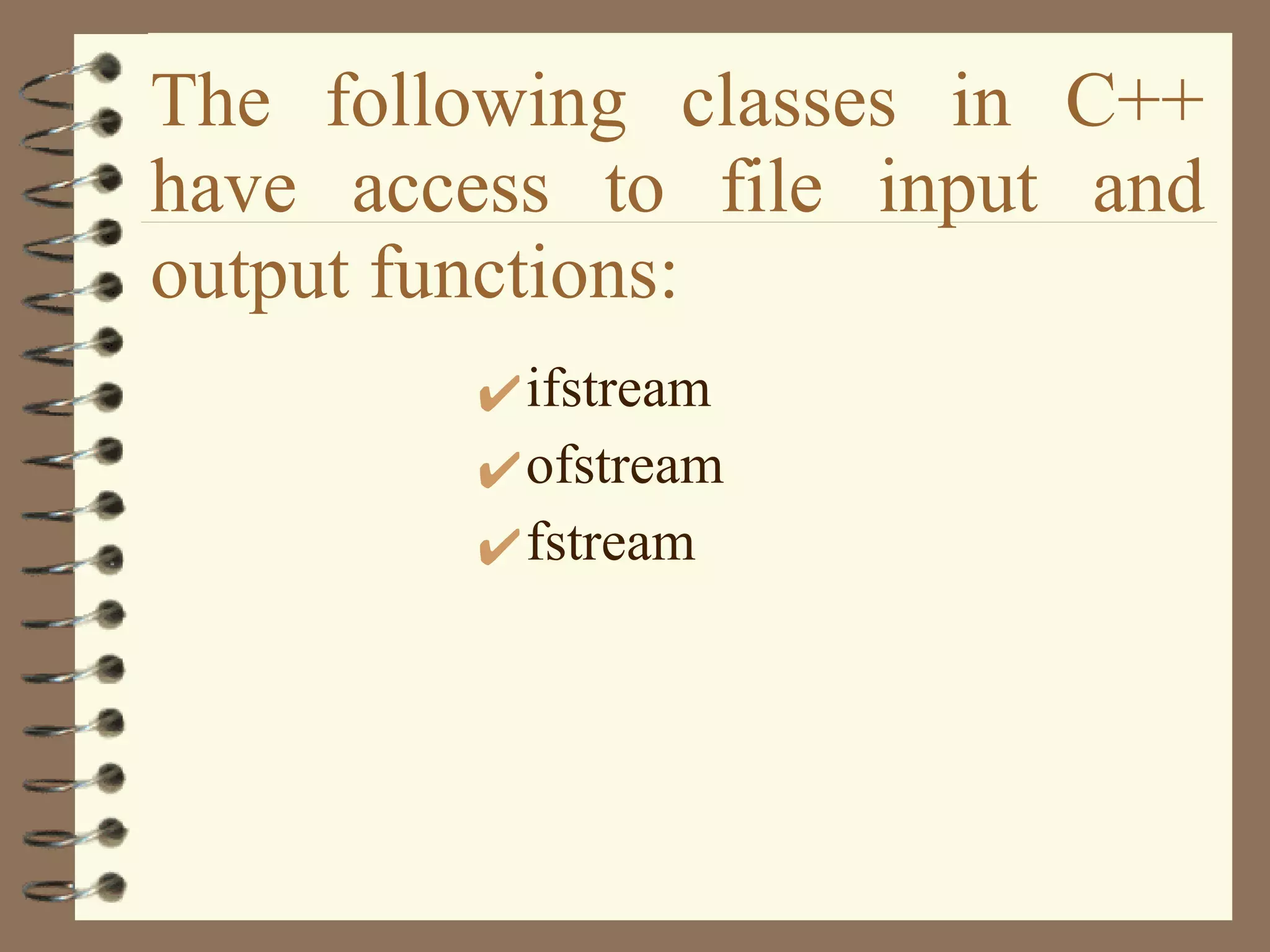
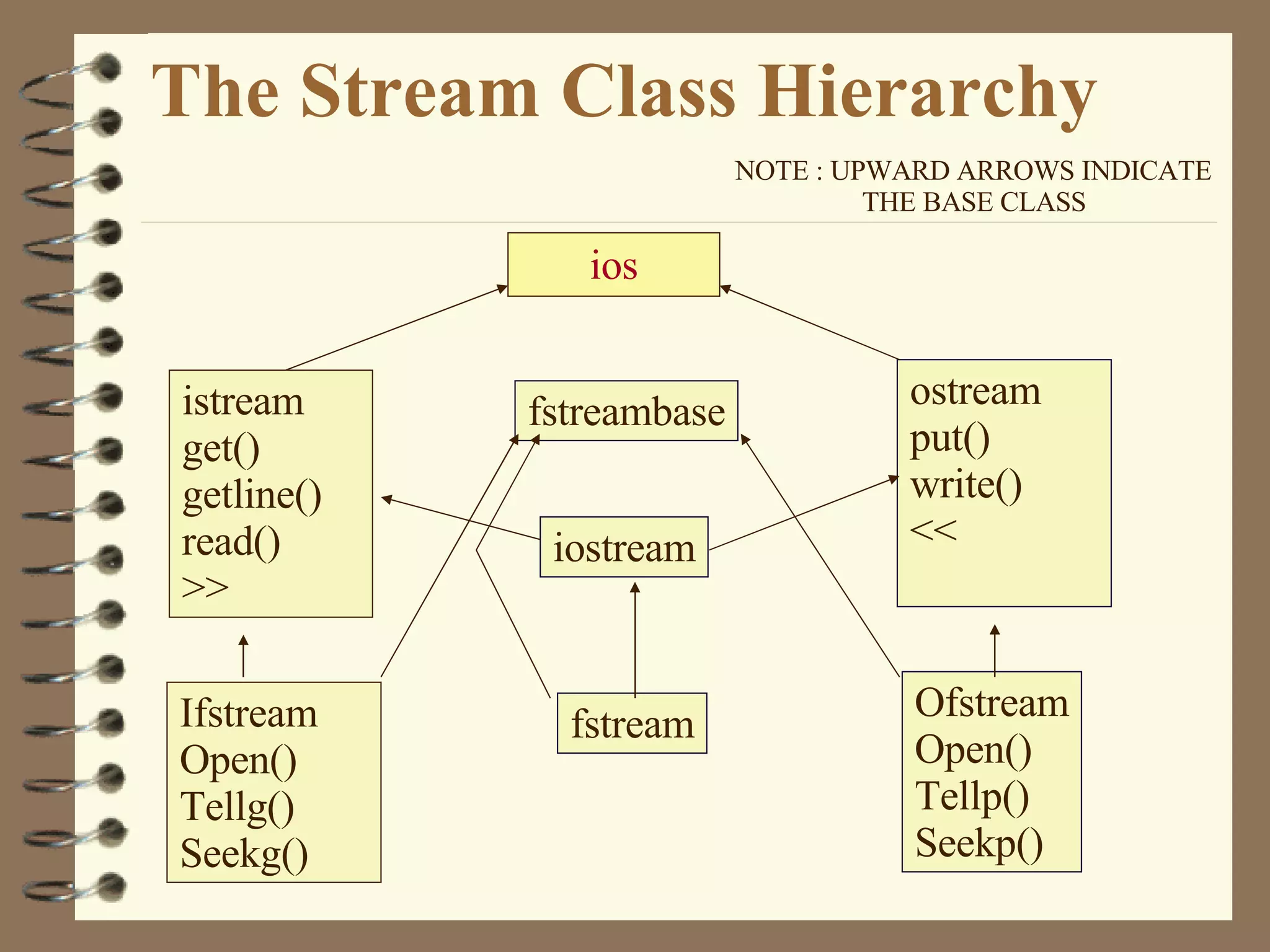
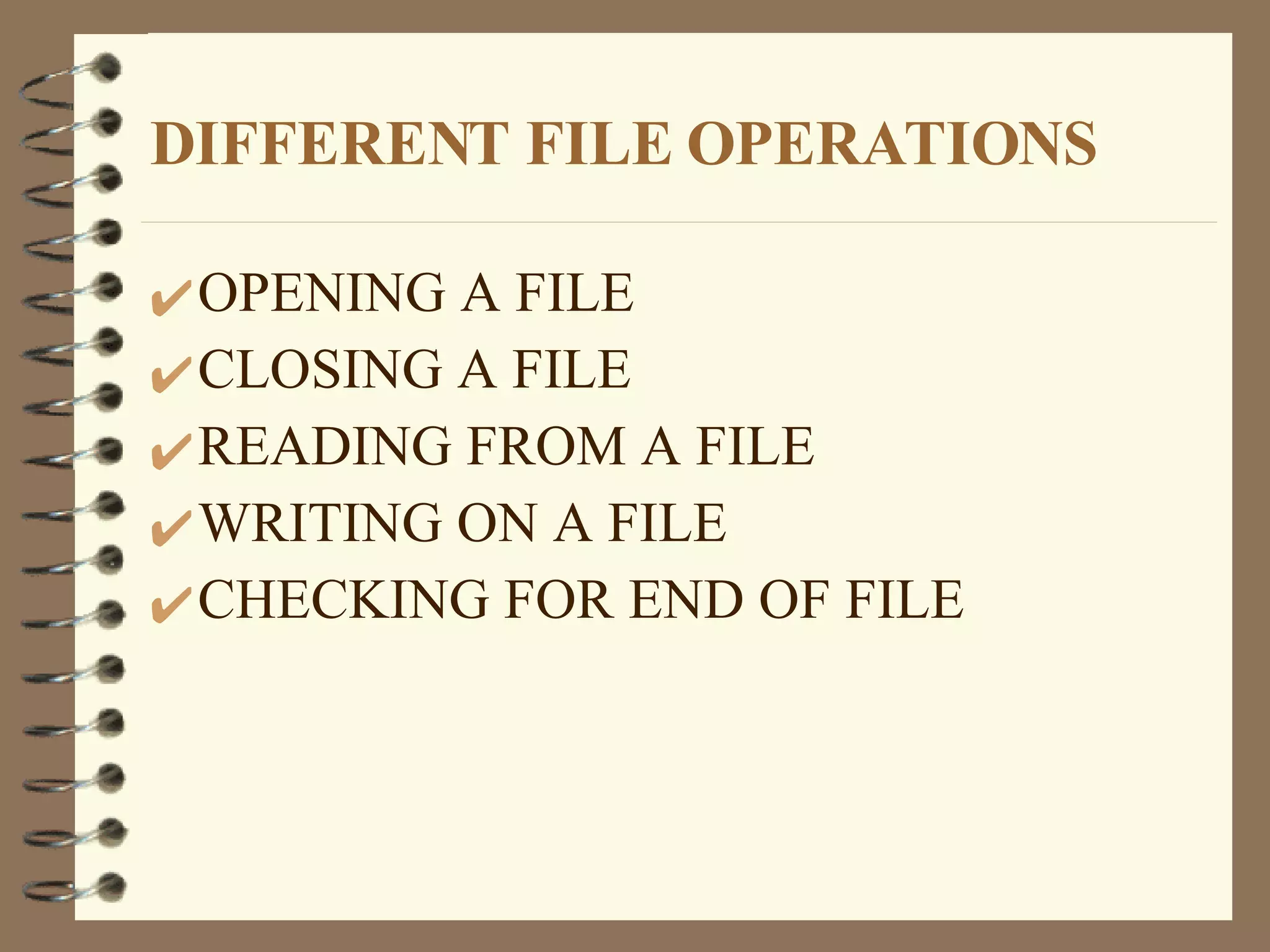
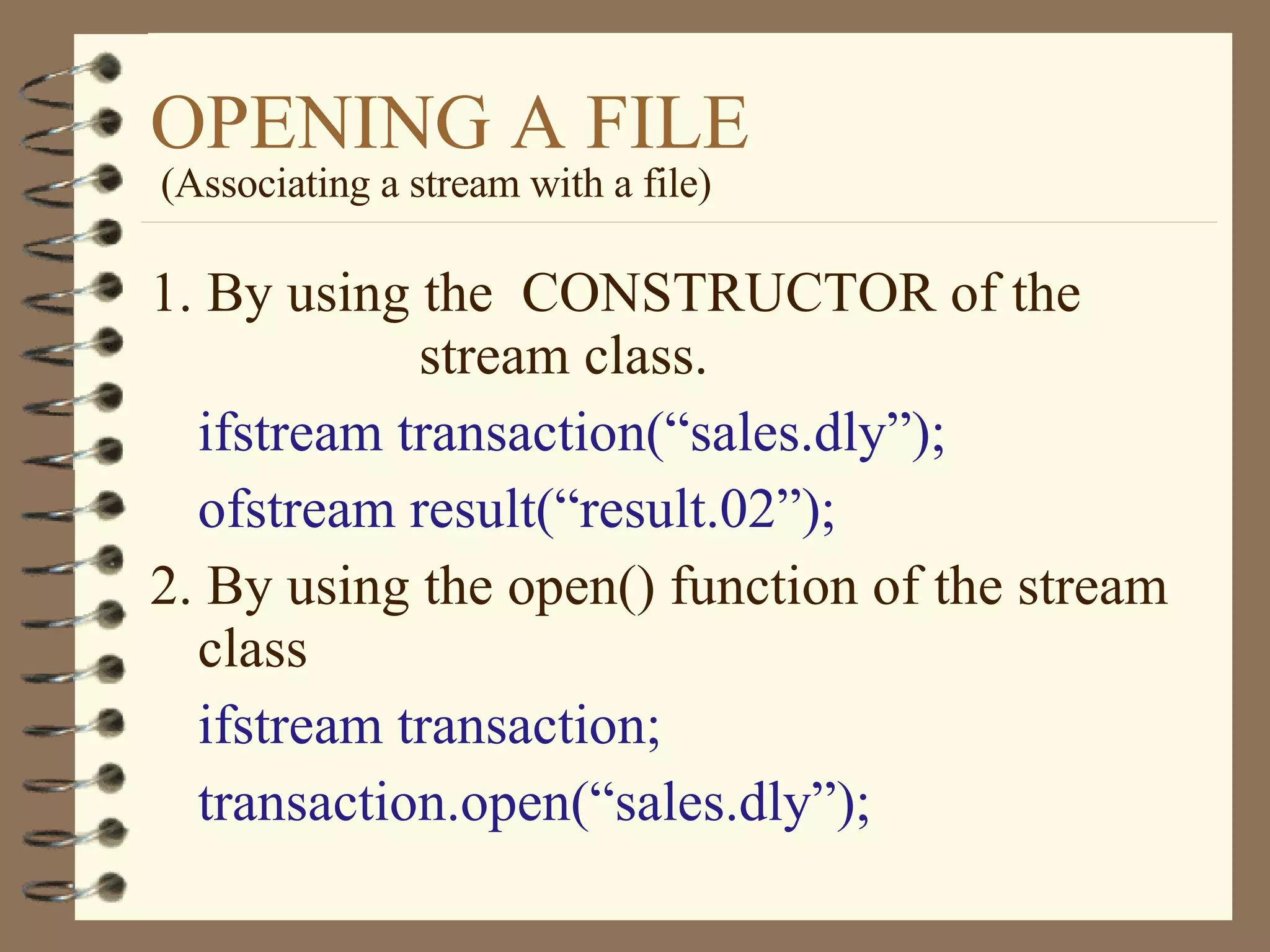
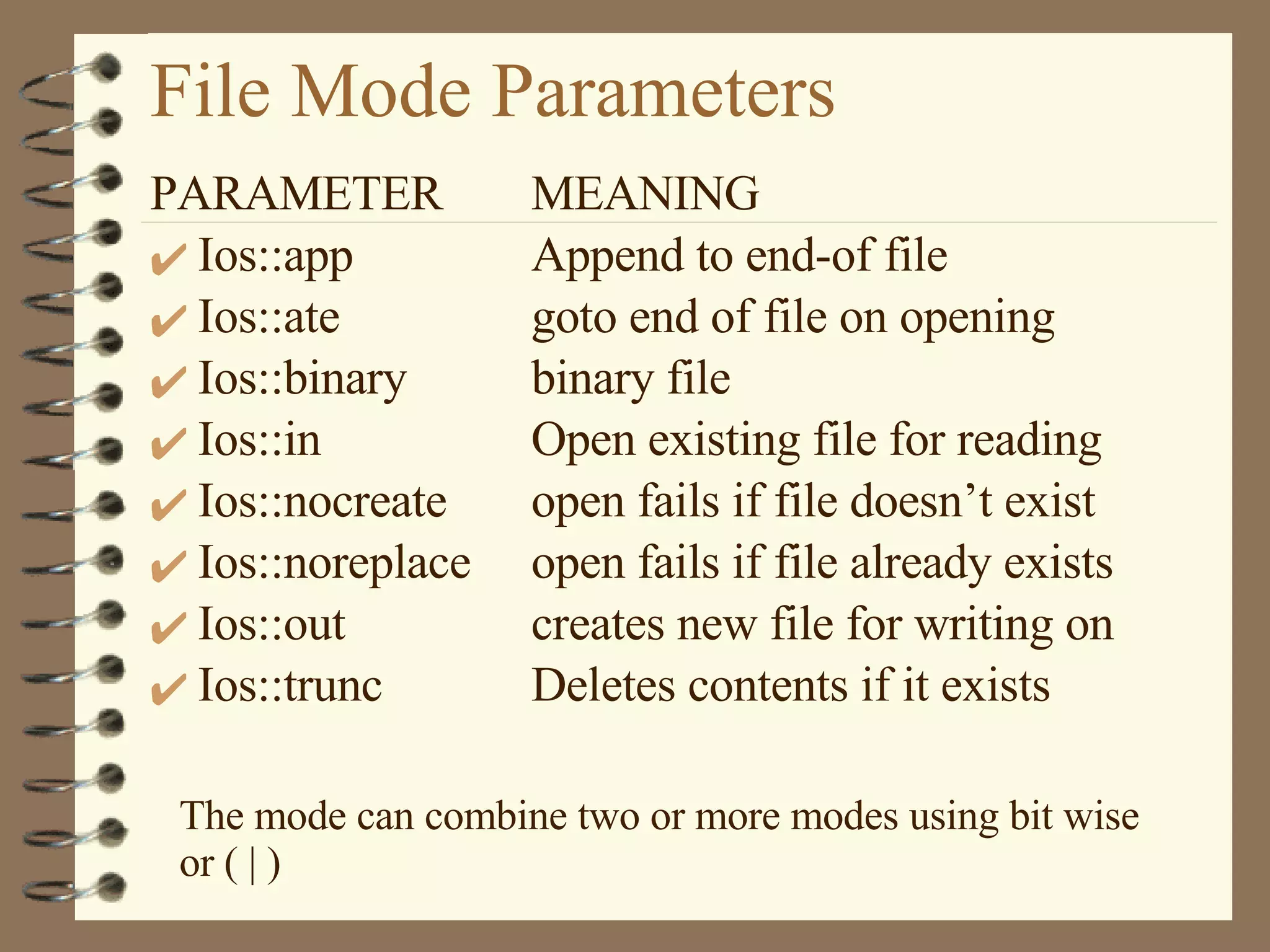
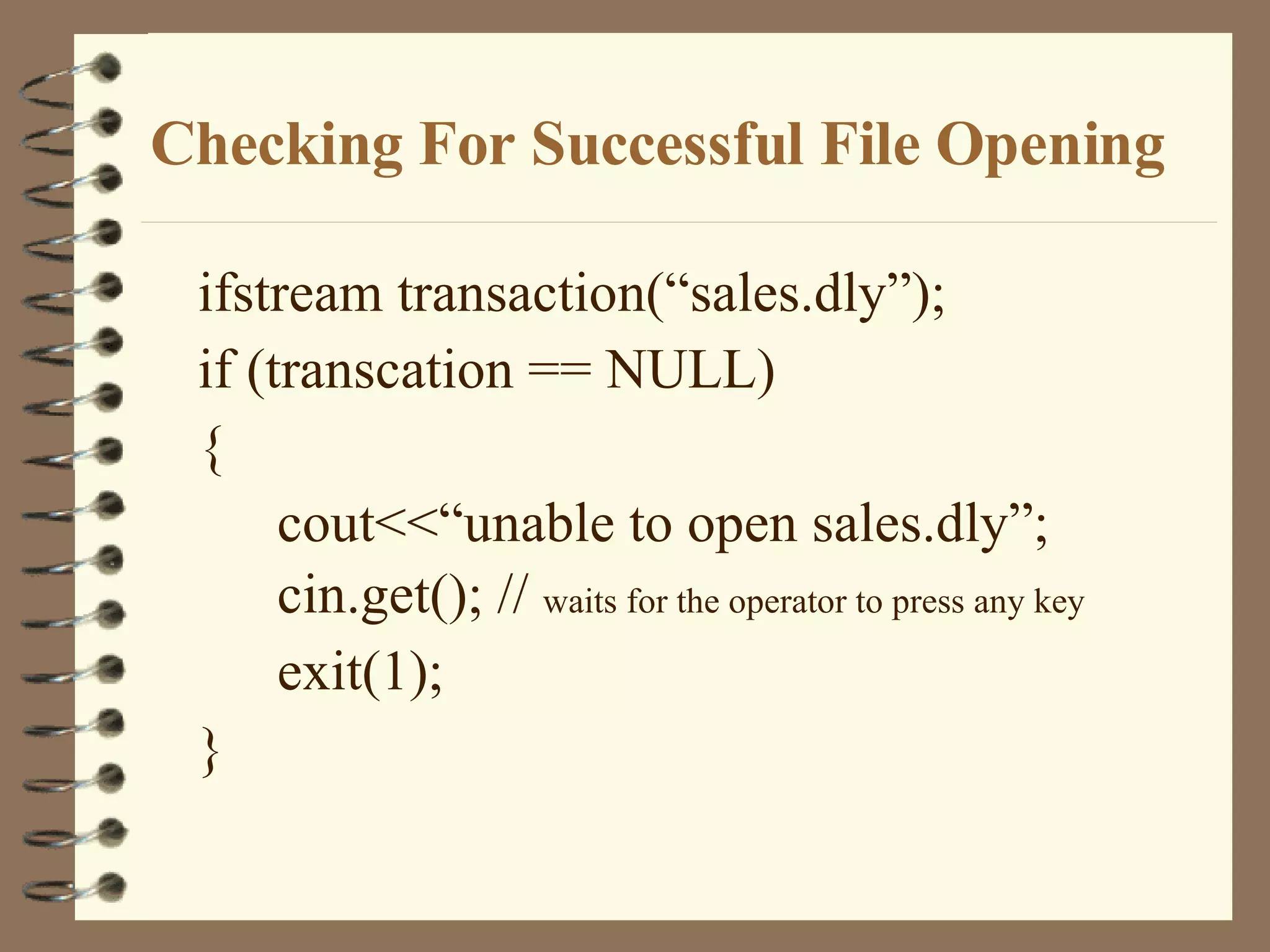
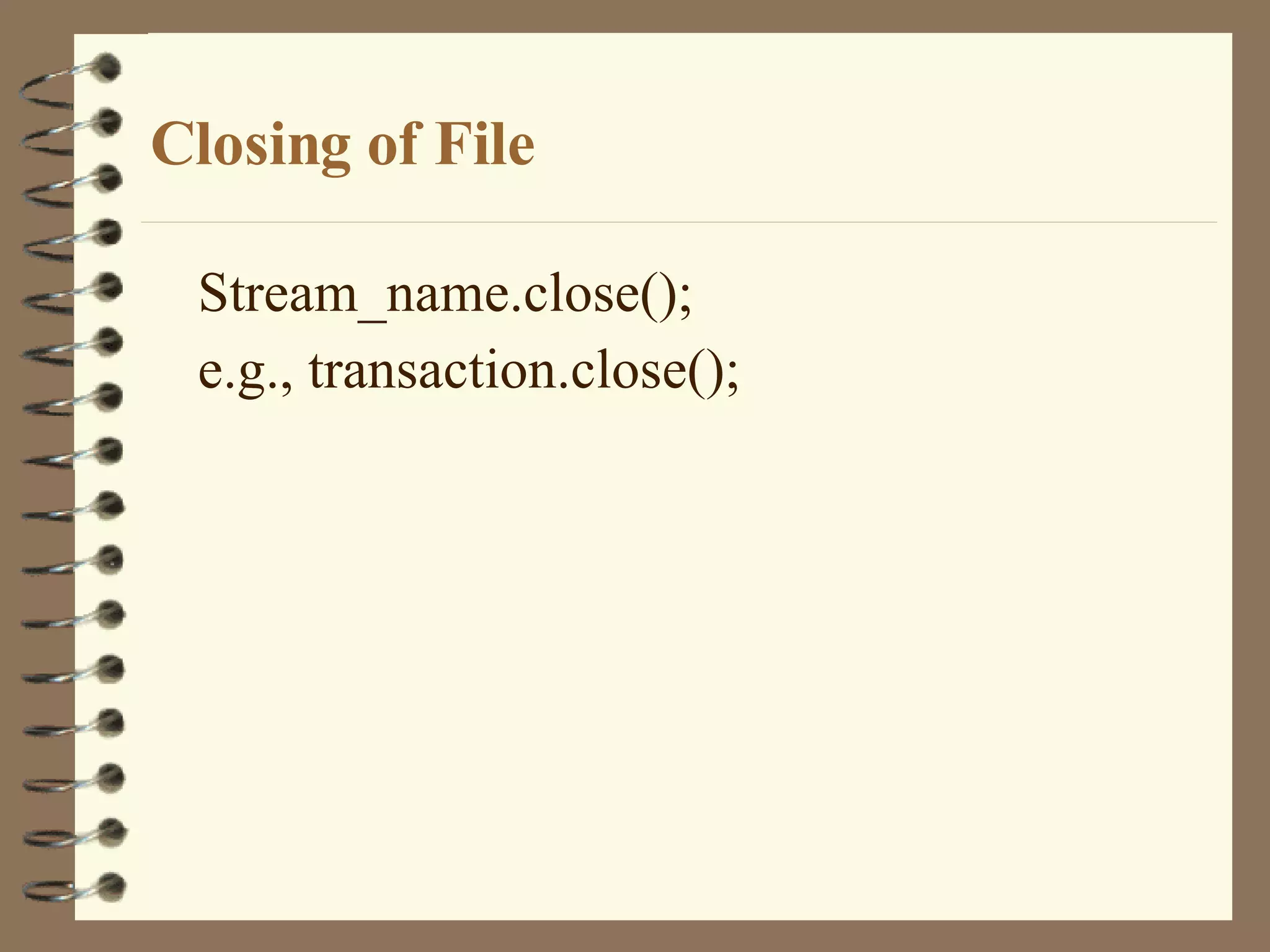
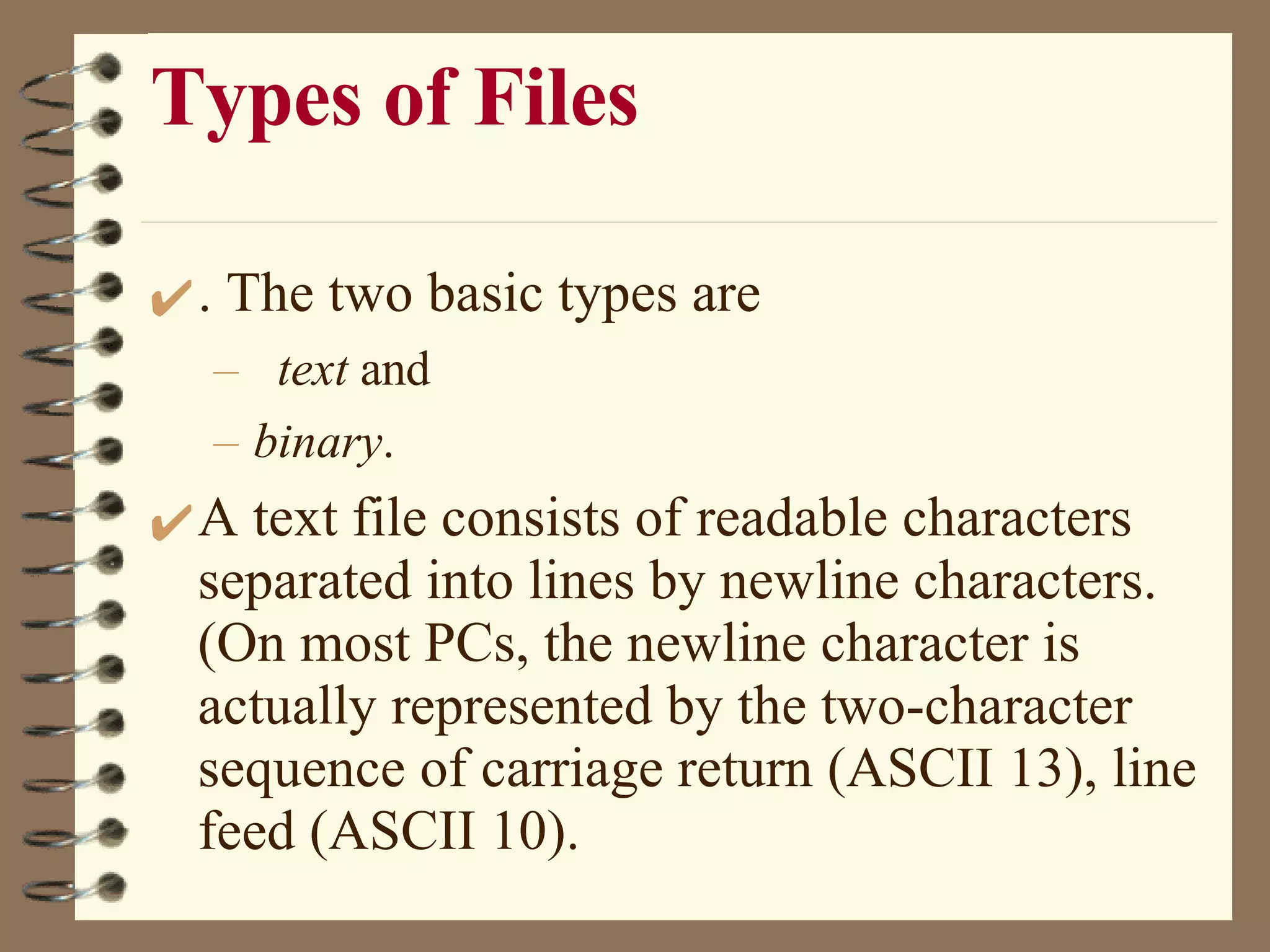

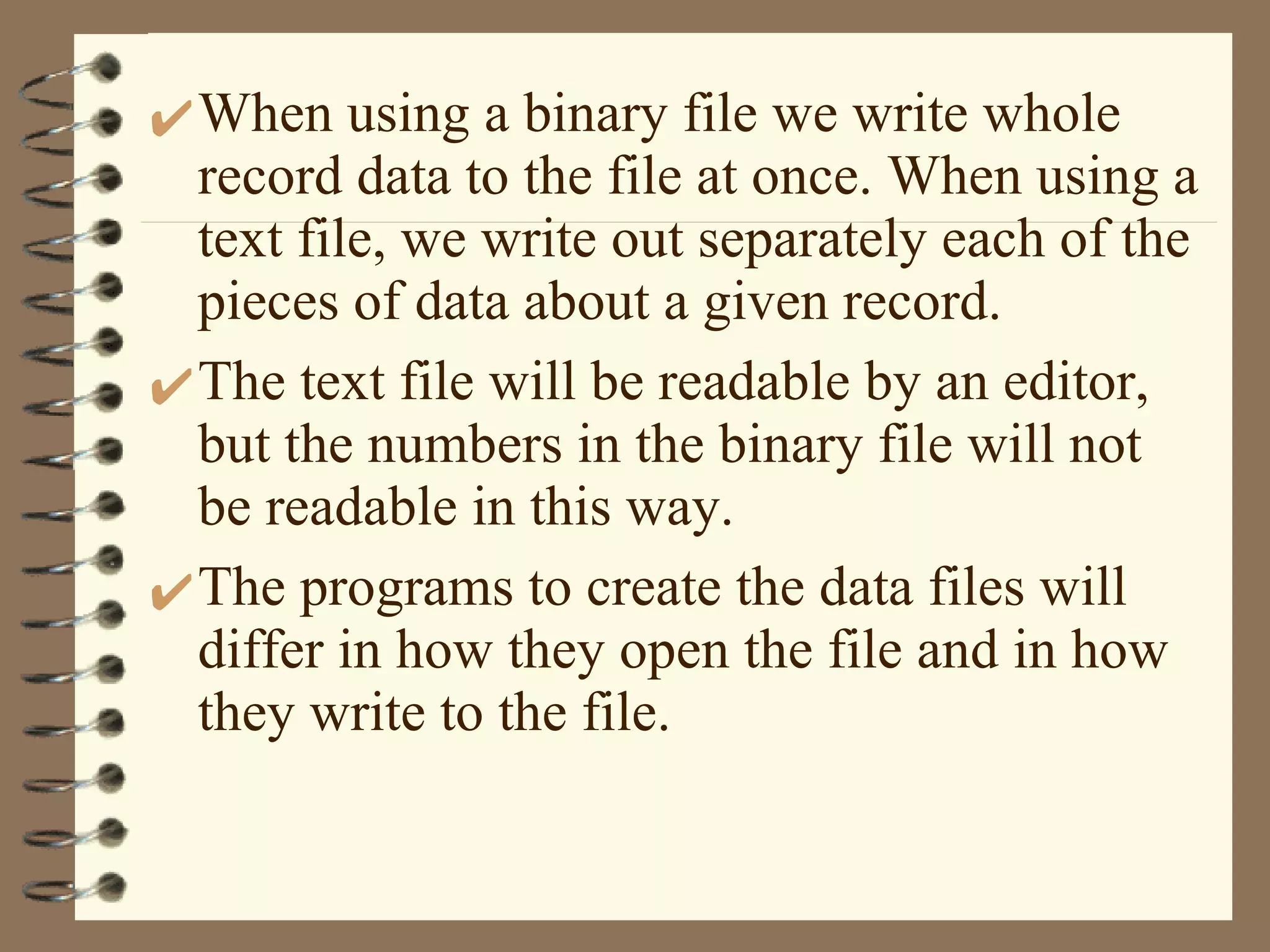
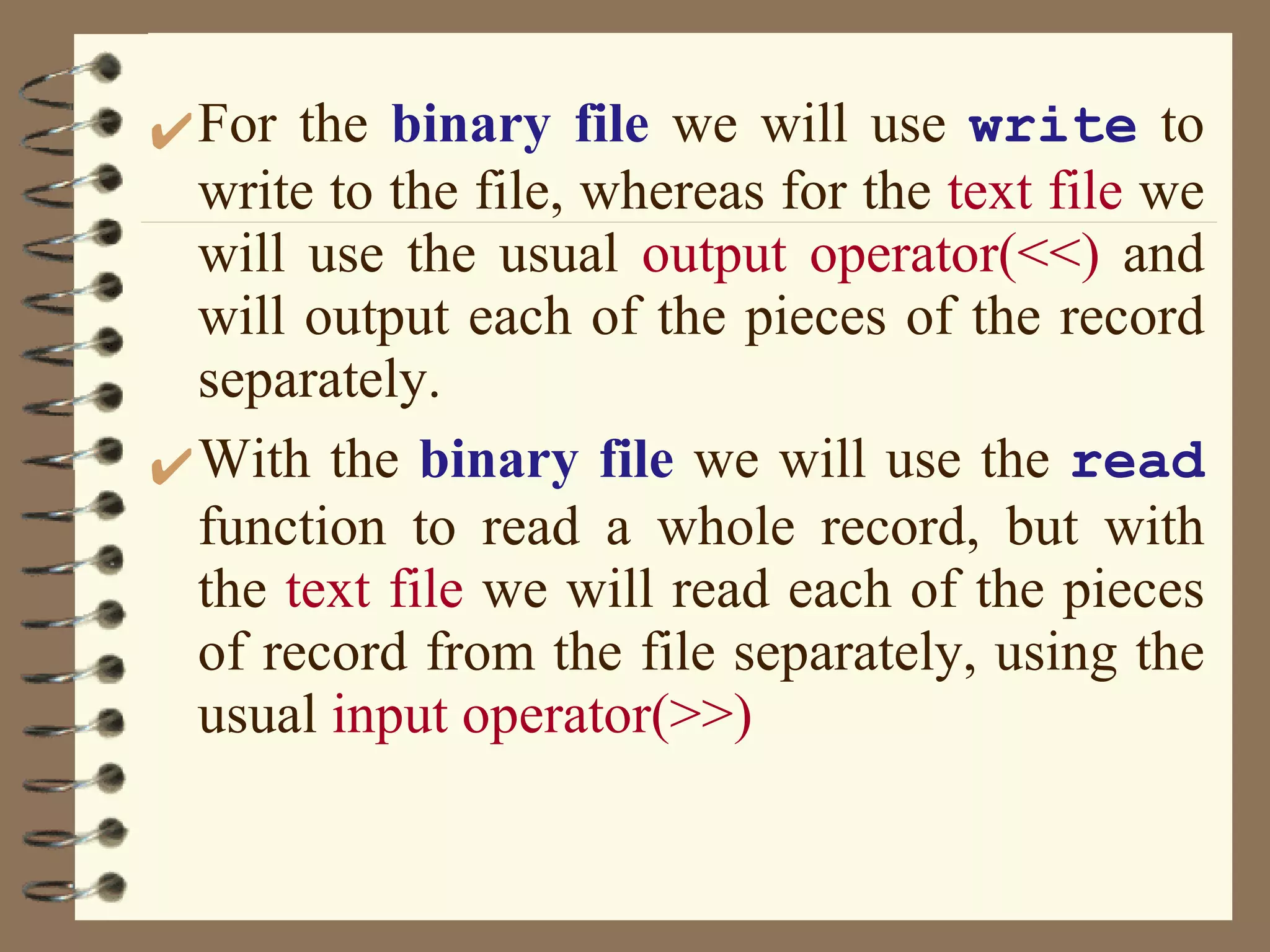
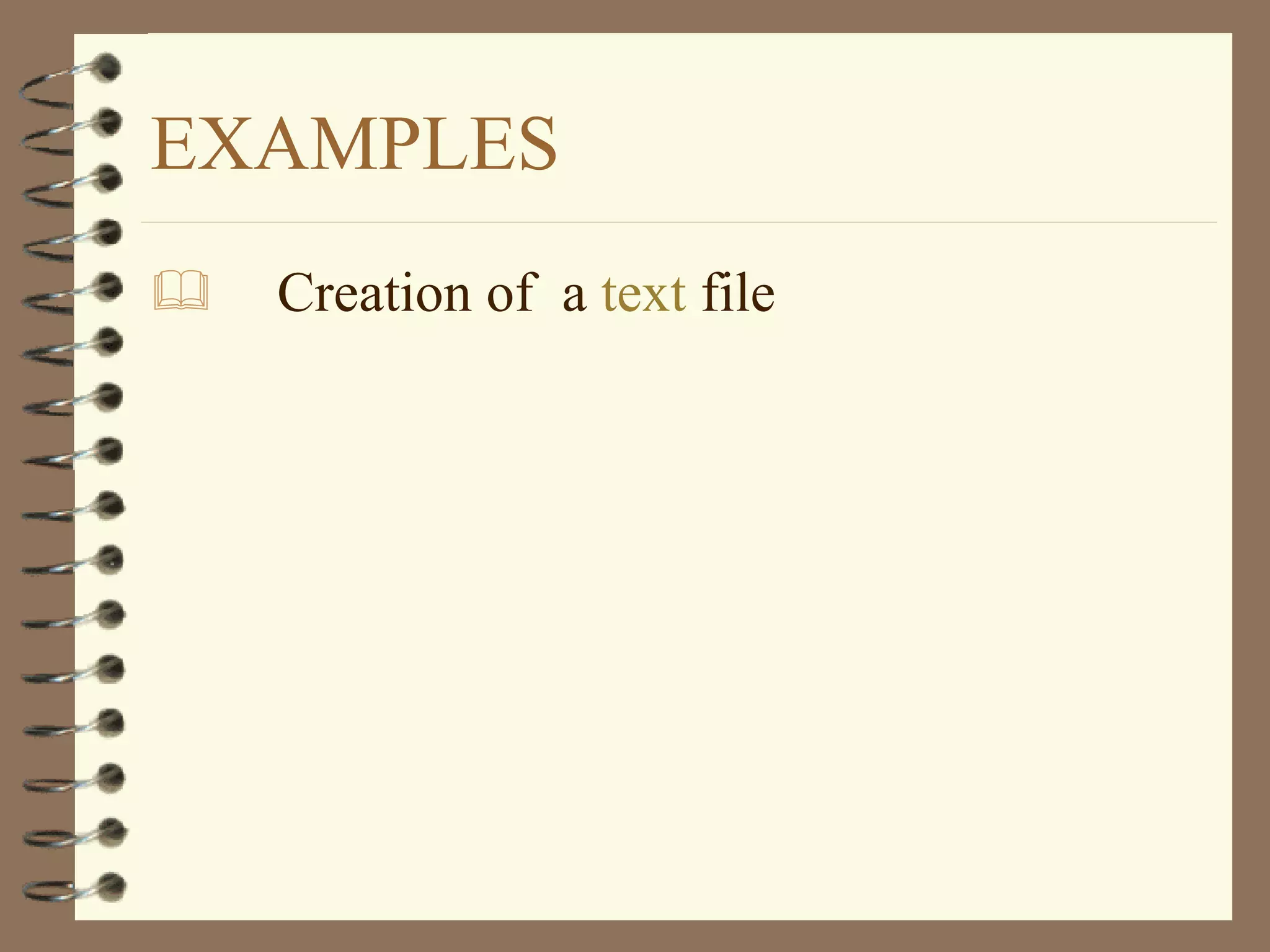
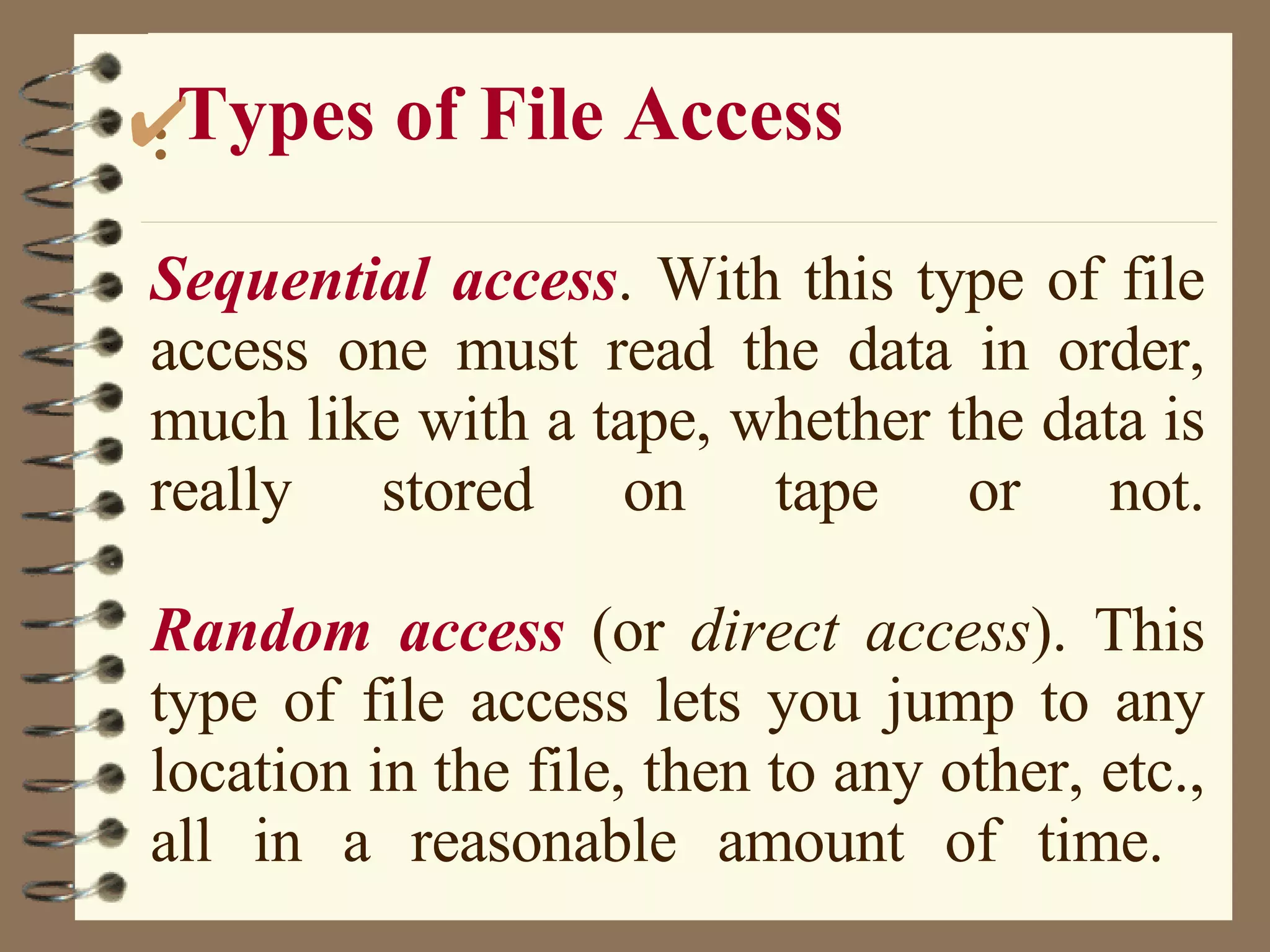

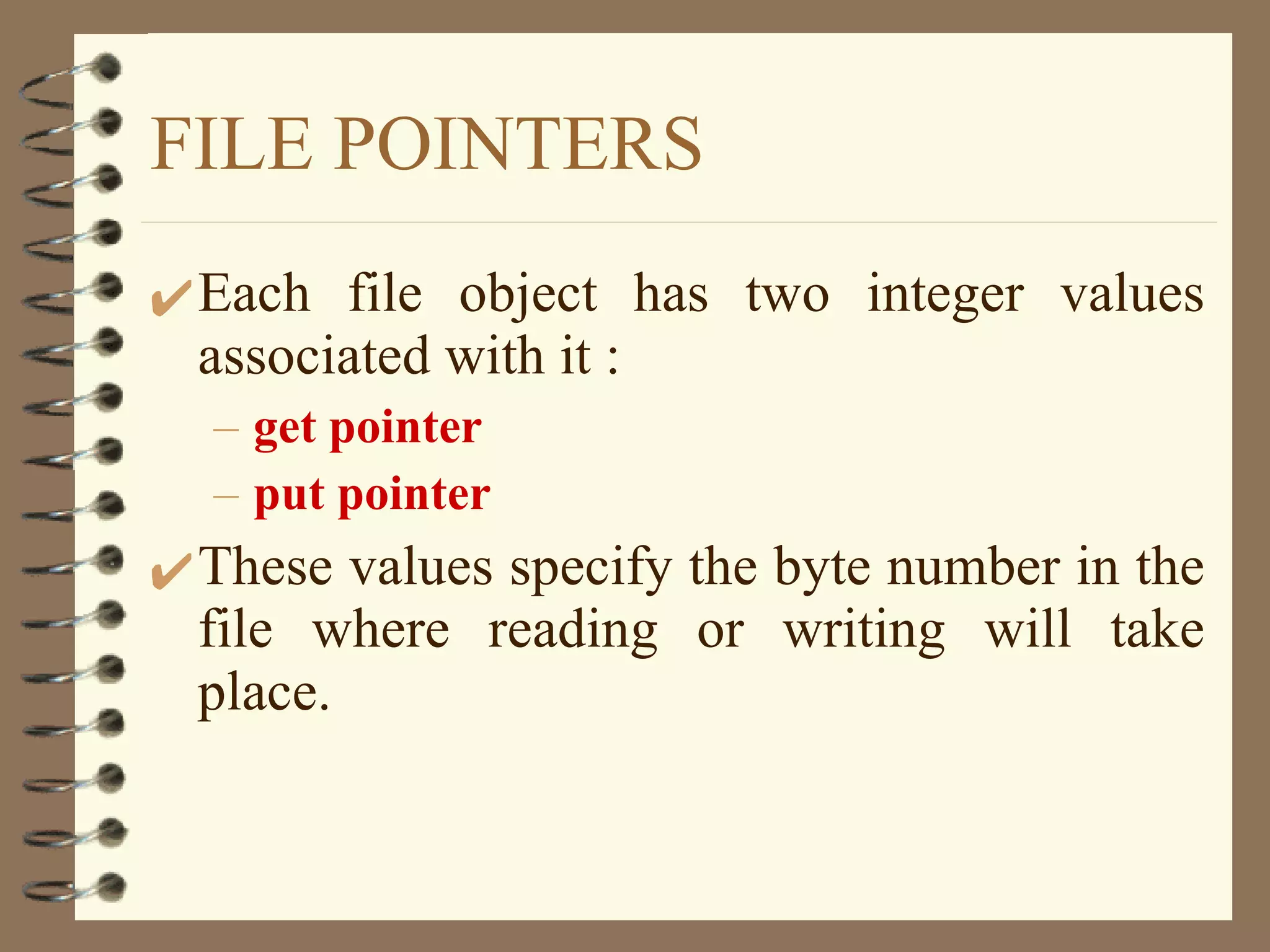
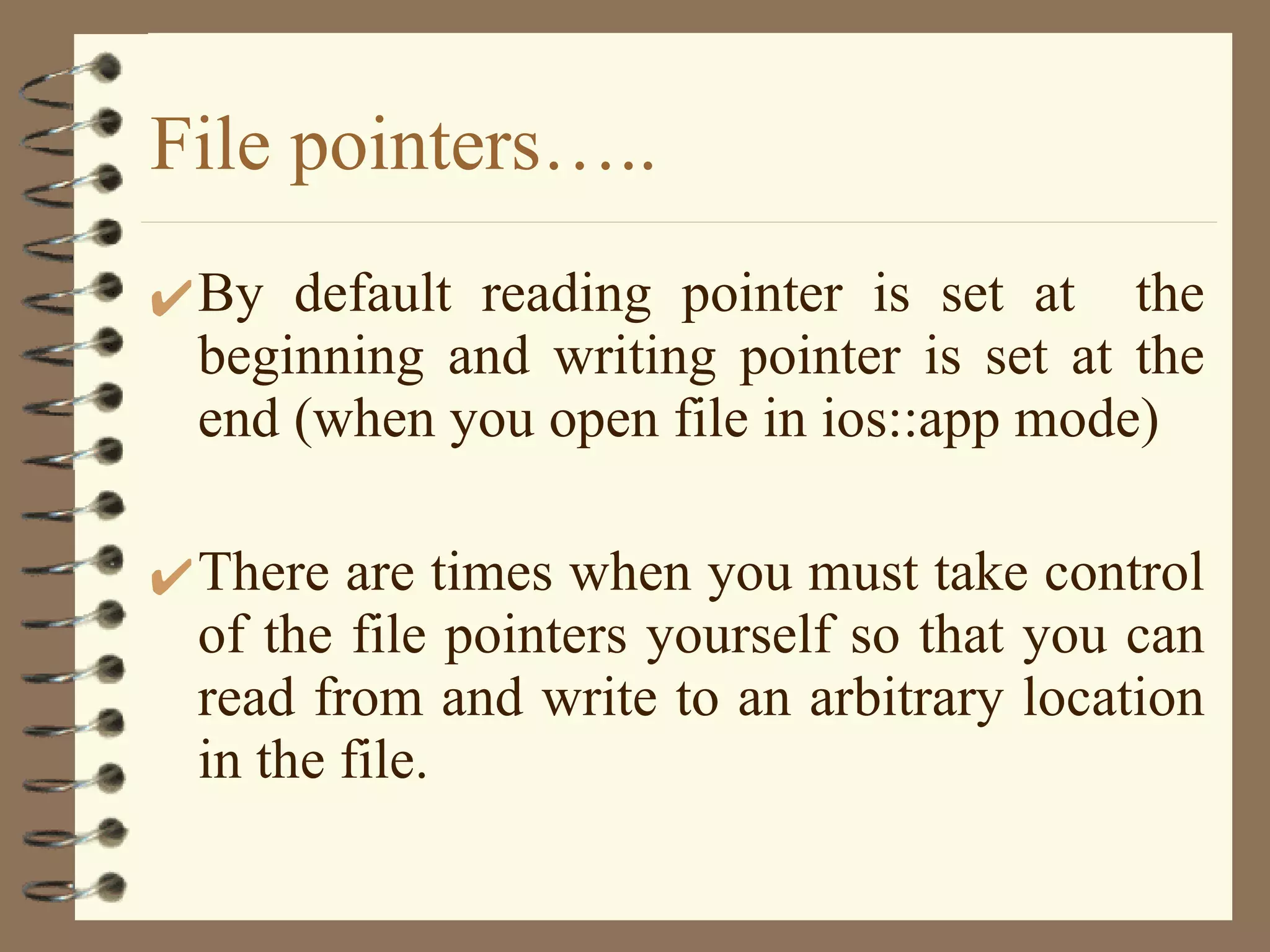
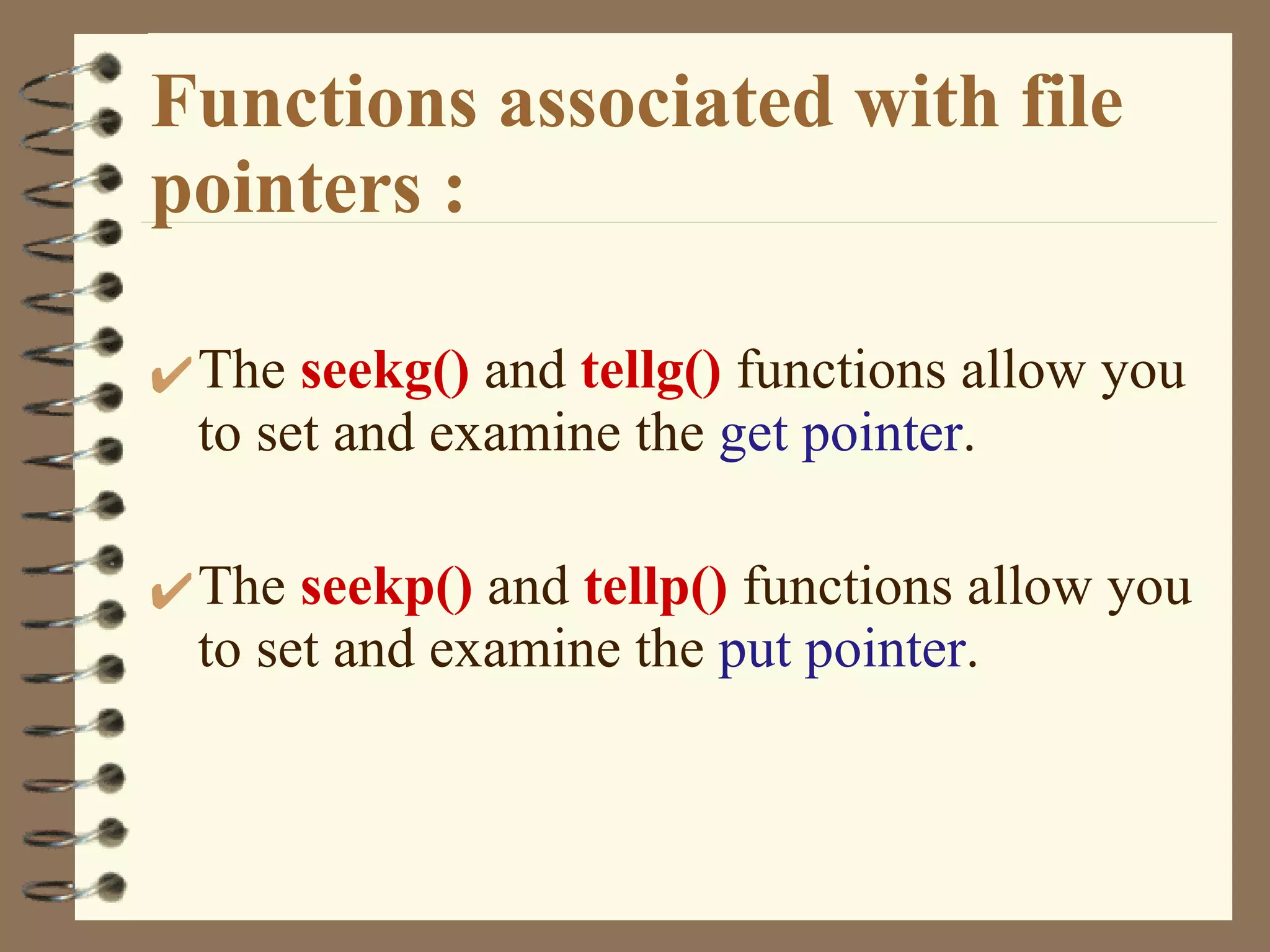
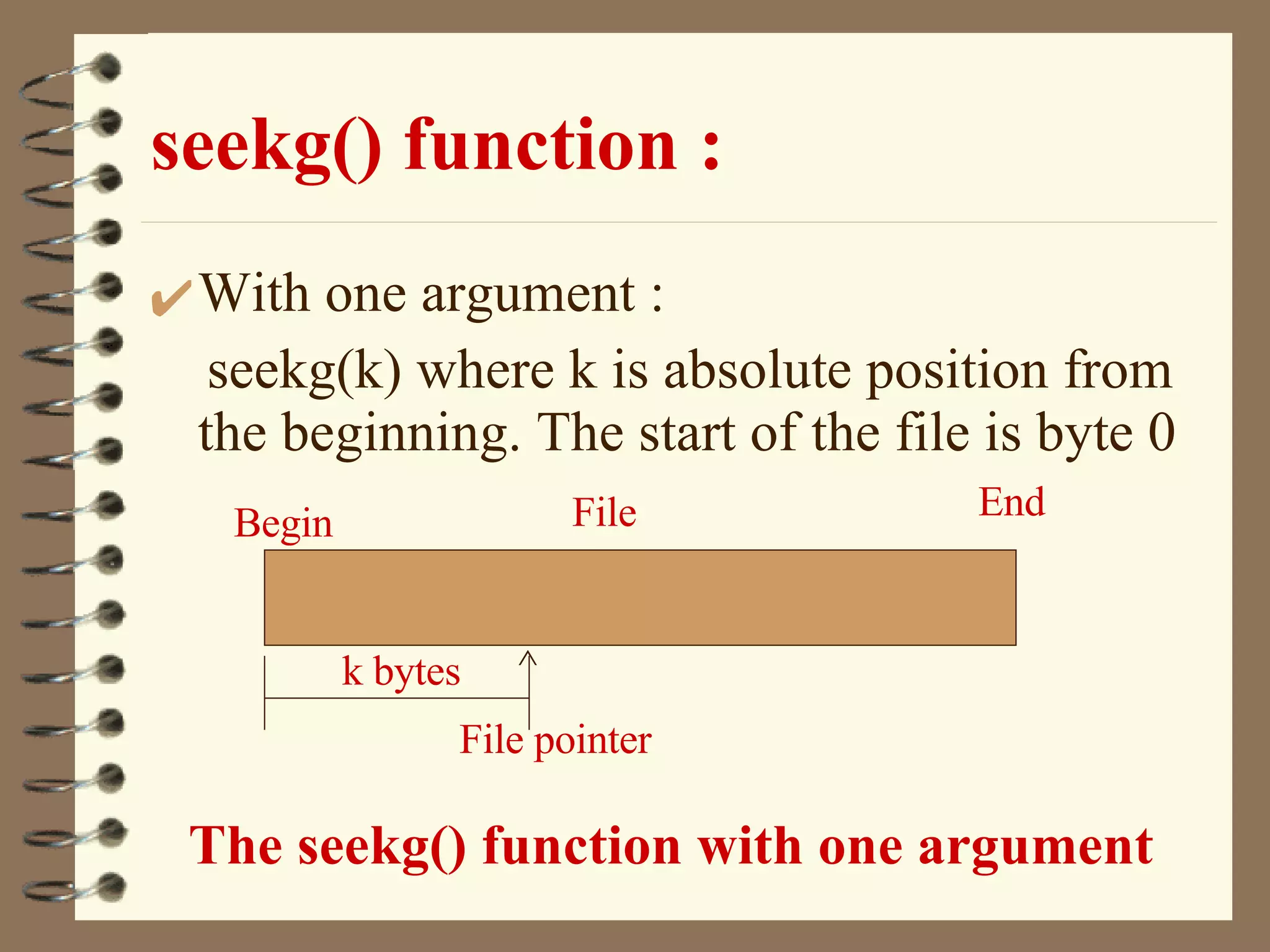
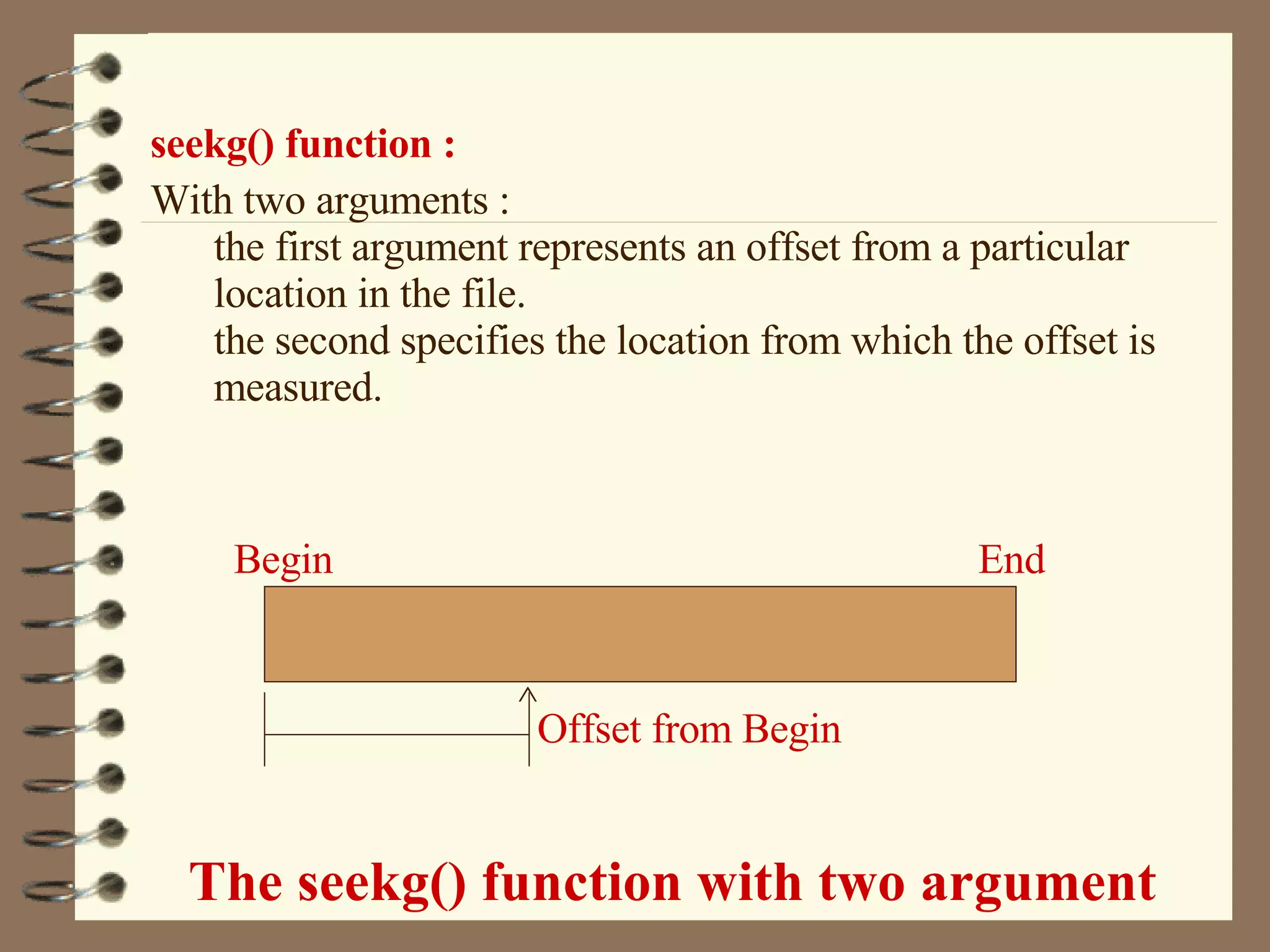
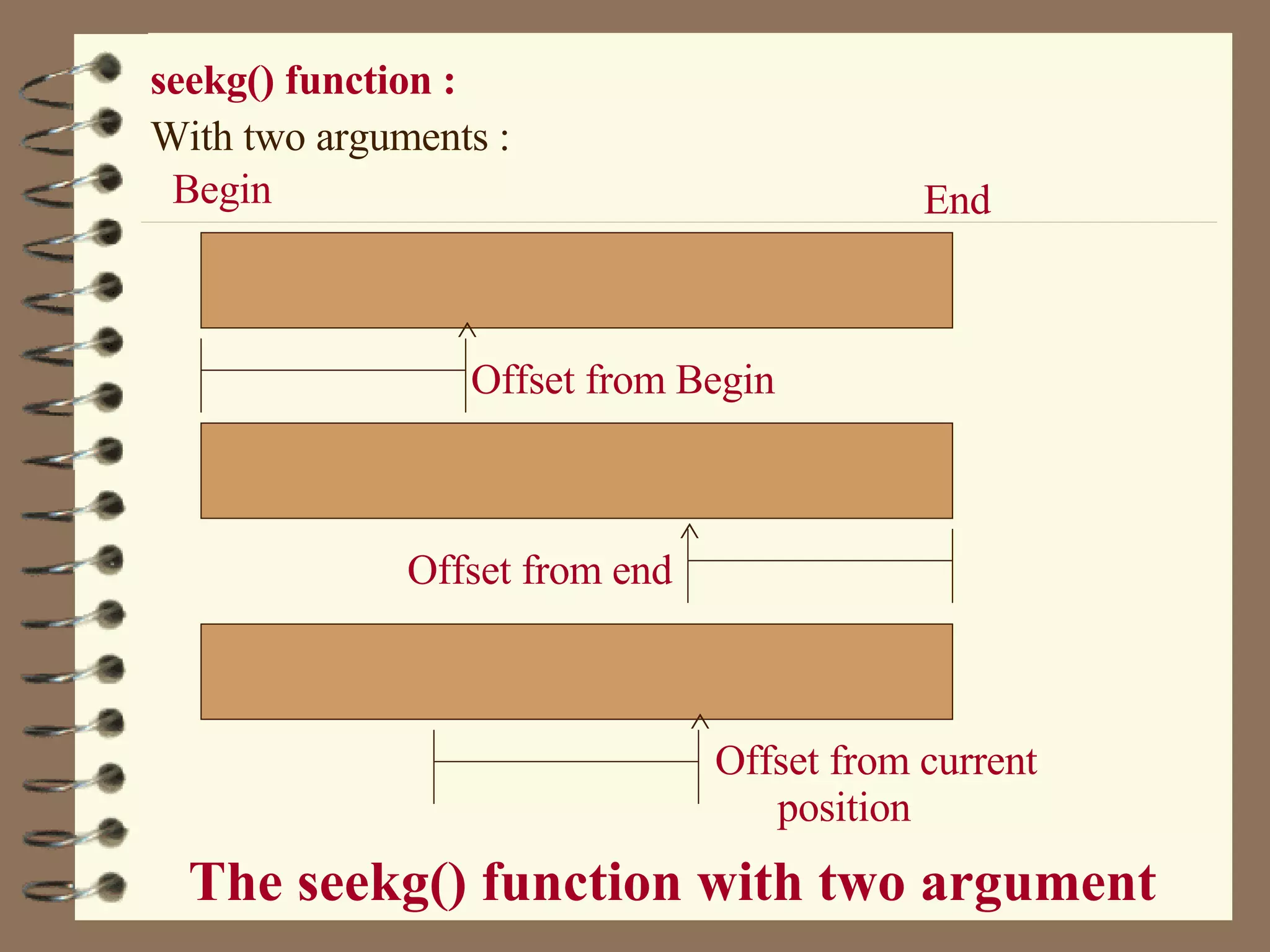
![// #include <fstream.h> #include <conio.h> #include <stdio.h> void main() { //clrscr(); char c,d,ans; char str[80]; ofstream outfl("try.txt"),out("cod.dat"); ifstream infl; do { cout<<"please give the string : "; gets(str); outfl<<str; cout <<"do you want to write more...<y/n> : "; ans=getch(); } while(ans=='y'); outfl<<'\0'; outfl.close(); //clrscr(); getch(); cout <<"reading from created file \n"; infl.open("try.txt"); out.open("cod.dat"); //********************************** c=infl.get(); do { d=c+1; cout<<c<<d<<'\n'; out.put(d); c= infl.get(); } while (c!='\0'); out<<'\0'; infl.close(); outfl.close(); getch(); //********************************* }](https://image.slidesharecdn.com/filepointers1-1215104829397318-9/75/File-Handling-in-C-26-2048.jpg)
